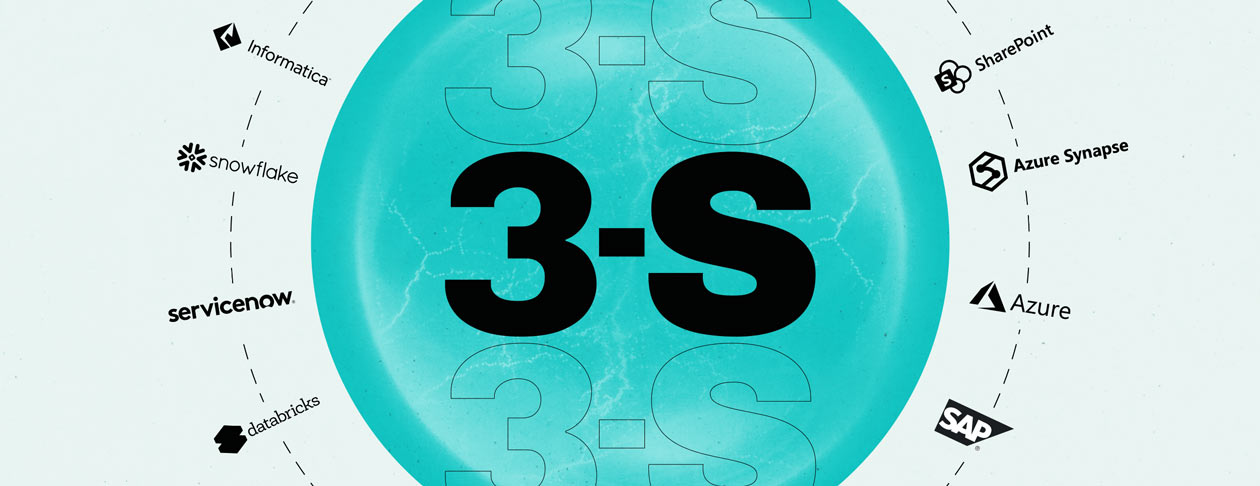Harnessing the power of extensibility in end-to-end automation solutions

Automation solutions have become a strategic imperative, and it’s no surprise: They streamline disparate systems and processes to make enterprise operations far more efficient than when driven by manual work. However, merely deploying an automation platform won’t suffice to sustain results. Choosing a platform that lacks extensibility is a sure way to stifle innovation and growth.
Integration is a core capability of a Service Orchestration and Automation Platform (SOAP), according to Gartner®. SOAPs are today’s evolved workload automation solutions.
To ensure your infrastructure can evolve is to empower your people and operations. A solution that’s capable of such evolution is one that easily integrates with other essential tools and supports the creation of an automation fabric.
Together, we’ll explore the features of an extensible automation solution, its benefits over disjointed integrations and how to apply its power to gain a competitive edge.
What makes an automation solution extensible?
In an automation platform, extensibility refers to the ability to expand its capabilities without the need for excess coding or fundamental changes to existing architecture. Extensible technology maintains relevance longer than restricted software.
Three main elements indicate a platform is extensible.
No-code or low-code environment
A cornerstone of extensibility is a no-code or low-code setup. Users with varying skill levels should be able to easily design, implement and modify workflows. If anyone can create extensible components, they can get actively involved in the creation of automated processes. This approach also doesn’t rely heavily on specialized IT skills for everyday tasks, so deployment and modification are much easier.
Code-heavy workflows should be the exception to the rule in design to empower superusers of a platform or language.
Built-in connectors
An extensible automation platform offers pre-designed connectors that make for simple and reliable integration with a wide array of applications, databases and IT systems. Whether you need to pull data from a CRM, integrate with an ERP or connect to a cloud service, connectors eliminate the need for custom code and integration maintenance. Vital to the success of these integrations are strong support and quality assurance, regular updates and minimal to no dependencies; setup should be as simple as a click.
⇨ Learn more about how to elevate your automation experience with connectors.
Open API
Finally, an open API is instrumental in extending an automation platform’s functionality. It enables developers to tailor automations to their industry’s and organization’s requirements. Fine-tuning is often essential for supporting unique business processes. Whether you’re automating business processes and their associated applications or building your automation platform into your existing CI/CD builds, API flexibility is key to ensuring interoperability in the future.
Benefits of an extensible automation platform
While your organization could gain many advantages from adopting an automation platform with robust extensibility, a few stand out.
Visibility: Centralizing automation management
One of the primary benefits of having an extensible automation solution is the enhanced visibility it offers across all automated processes. By centralizing the control and monitoring of different automation tasks, you can see them all through a “single pane of glass.” Consolidating helps to identify bottlenecks, streamline operations and improve decision-making efficacy.
Agility: Evolving with new demands
An extensible platform is inherently agile. It can adapt to changing business needs over time without any significant overhauls or replacements. In today’s dynamic markets and technology stacks, agility is crucial. Armed with nimble automation capabilities, you can pivot quickly and integrate new technologies without extensive downtime or resource expenditure.
Scalability: Supporting growth with minimal overhead
Being able to increase the amount of work or number of jobs your automation platform handles is key, as new growth opportunities are not always predictable. Innate extensibility makes a platform less of a burden for your IT department and decreases your reliance on third-party vendors — and, in turn, the time it takes to scale.
6 questions to ask software vendors about extensibility
How can you ensure you find a platform that will offer all of the above? Inquire about the following in your initial conversations with a software sales team.
- Can you describe the training and enablement resources you offer for IT staff and non-technical end users?
What you want to hear: Along with highly experienced support staff, we offer an extensive training and knowledge platform accessible to your team. - What kind of lift will be required to support your integrations?
What you want to hear: Our pre-built connectors come ready to run, and our extensibility framework lets you easily integrate with any other system or application. - How long does the average update take?
What you want to hear: Our updates happen automatically and won’t result in more than a few minutes of downtime for you. - Can you provide examples or case studies of how your solution enhances collaboration across departments and supports an organization’s evolution?
What you want to hear: Sure. Here are some case studies from companies like yours. We also have references available. - How do you recommend we review and optimize our automation setup as our needs change over time?
What you want to hear: We recommend you engage in a quarterly review with us. Success is an ongoing process, and we suggest regular check-ins with our team to ensure the most optimal implementation. Coupled with our various out-of-the-box health service implementations, you can ensure that your environment adheres to best practices based on known key success factors that we’ve identified from working with our most successful customers. - How do you communicate about new features and extensions?
What you want to hear: You can access an up-to-date catalog of all available integrations and will be notified of any new features. Updates to the catalog will be shipped and readily available as soon as they’re released — without an update to your software.
Inherent extensibility vs. disjointed integrations
Still tempted to use point solutions that rely on various third parties? Let’s compare true extensibility to a piecemeal approach.
| Extensible automation solution | Disjointed third-party integrations |
|---|---|
| ✅ Designed with flexibility in mind | ❌ Rigid and may not fit business needs |
| ✅ No customization required | ❌ Custom development can be costly and hard to support |
| ✅ Faster implementation and time to value | ❌ Multiple time-consuming implementations |
| ✅ Freedom to switch between services over time | ❌ High risk of vendor lock-in and limited agility |
| Extensibility in action: Your team accesses the RunMyJobs by Redwood catalog of connectors with the most up-to-date integrations for SAP, Oracle and other critical business systems. | The struggle without extensibility: Your team spends significant time searching for the right tools to integrate, writing code to make them work with your existing platform and maintaining each integration. |
Gain a competitive advantage with extensible automation
Leveraging the right automation tool that aligns with your larger automation strategy can mean the difference between achieving successful business outcomes and falling behind. As we’ve discussed, extensible automation can equip your organization with plenty of benefits — a collective threat to your competitors.
| Benefit: Extensible automation platforms streamline operations and reduce mundane work, which significantly reduces the need for manual intervention, increasing efficiency and lowering costs. Outcome: The immediate impact is a leaner operation. You’ll be able to reallocate resources from routine tasks to more strategic initiatives, making it faster and easier to go to market with new products and services. | |
| Benefit: Automated customer support processes, such as ticket sorting and basic query responses, enhance the quality and consistency of your customer service. Outcome: Consistently excellent service improves customer satisfaction and loyalty, which are key differentiators in a competitive market. It’s also likely to contribute to better customer retention rates and a solid reputation. | |
| Benefit: Precise data handling and integration improve data accuracy and compliance with regulatory standards. Outcome: Reliably managing data reduces the incidence of costly errors and non-compliance penalties. It also builds a foundation of trust with stakeholders, who value data security and ethical management. | |
| Benefit: With robust data integration and analytics, you can consolidate real-time data from multiple sources to generate actionable insights into your operations. Outcome: Armed with deep insights, your team can react to market conditions and anticipate future trends to position your business ahead of the competition. | |
| Benefit: Rapid implementation of new automations gives you the flexibility to explore and innovate within new segments without significant upfront investment. Outcome: Moving quickly without the drag of large-scale IT infrastructure changes offers a major edge. It’s possible to create niches that competitors without end-to-end automation find difficult to challenge. |
When the above elements combine, the result is seamless end-to-end automation that runs across multiple business processes and improves various facets of operations, from customer relationships to decision-making to market innovation. Automation, wisely applied, can be a key factor in sustained success and leadership in any industry.
What extensibility looks like in Redwood Software products
| • Connector catalog simplifies integration selection • Native API integrations support a clean core for SAP users • Connector Wizard facilitates integration building Most common integrations: SAP, ServiceNow, Databricks and Snowflake | • Job steps library enables workflow orchestration • Super REST adapter allows for rapid API creation • Self-service portal frees up time for your IT team Most common integrations: Informatica, ServiceNow, Azure and SharePoint |
| • Catalog of pre-built, ready-to-run integrations for both legacy and modern solutions Most common integration: Oracle JD Edwards | • REST API prevents the need for complex workarounds • Cloud connectors and architecture support scalability • Easy integration to partner workload automation solutions drives efficiency Most common integrations: RunMyJobs, ActiveBatch and Tidal |
Reap maximum value from an end-to-end automation solution
As has been more evident than ever in the past several years, it’s vital to be poised for market changes and ready to engage in rapid innovation. Automation can serve both purposes, but not all automation solutions are created equal.
Redwood Software was named a Leader in the 2025 Gartner® Magic Quadrant™ for SOAP report — for the second consecutive year. Download the full analyst report to learn why.
We’ve covered just some of the grounds for using an extensible, end-to-end automation solution. There’s even more latent potential for shifting your organization into the ultimate efficiency and growth mode. Demo Redwood’s solutions to find out how.
About The Author

Nick Totero
Nick Totero is a Senior Manager of Solutions Engineering at Redwood Software. He’s been with the company for seven years and is responsible for leading the Pre-Sales organization in new and expansion business development. Nick has, in part, been responsible for growing the Solutions Engineering team from a one-person operation at the start of 2020 to 30-plus as of 2025. He’s also a certified Demo2Win presenter and Automation Expert.